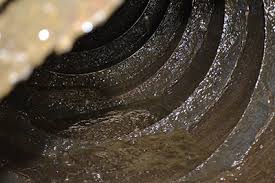manual on rain water harvesting Central ground water board
+++++++++++++++++++++++++++++++++++
web site for rain water harvesting
For example, Delhi, Rajasthan and Gujarat where the total annual rainfall occurs during 3 or 4 months, are examples of places where groundwater recharge is usually practiced.
In places like Assam, Kerala, Mizoram, Tamil Nadu and
Bangalore where rain falls throughout the year barring a few dry periods, one
can depend on a small sized tank for storing rainwater, since the period
between two spells of rain is short. Wherever sub-strata is impermeable
recharging will not be feasible. Hence, it would be ideal to opt for storage.
Delhi Jal Board
Rainwater Harvesting Assistance Cell Varunalaya-I, karol Bagh, New Delhi-110005.
Ph. 3678380-82 extn. 246,240.
or
Officer Incharge, Central Ground Water Board, State Unit Office, Gallery no. 18/11, Jamnagar House,
Mansingh Road, New Delhi-110011
e-mail: niccgwb@sansad.nic.in; cgwa@nic.in; cgwa@vsnl.com
website: www.cgwaindia.com
Ph. 3384355. Fax. 3386743.
http://www.delhijalboard.nic.in/djbdocs/consumer/conservation.htm
Delhi Jal Board
Rainwater Harvesting Assistance Cell Varunalaya-I, karol Bagh, New Delhi-110005.
Ph. 3678380-82 extn. 246,240.
or
Officer Incharge, Central Ground Water Board, State Unit Office, Gallery no. 18/11, Jamnagar House,
Mansingh Road, New Delhi-110011
e-mail: niccgwb@sansad.nic.in; cgwa@nic.in; cgwa@vsnl.com
website: www.cgwaindia.com
Ph. 3384355. Fax. 3386743.
http://www.delhijalboard.nic.in/djbdocs/consumer/conservation.htm
DATA FOR DESIGN::
The following data is required to design a system and evaluate cost of construction
1.Rooftop area in square meter from where rain is to be harvested
2.Rain water drain pipe from the roof to the ground level
3. Drain at ground level to carry the rain water to the injection well
4.Water level at your area to find ot the depth of boring required at your site
Source of the article: http://www.indiawaterportal.org/questions/frequently-asked-questions-faqs-rainwater-harvesting-rwh
http://bangalore.citizenmatters.in/articles/587-rwh-guide
What quantity of rainwater can be collected?
The rainwater harvested depends upon the catchment area, the rainfall pattern in the area and the drianage/ collection system used.
To understand the potential for rainwater harvesting, lets take the example of a house in Delhi with a terrace area of 100 sqm. Taking the average annual rainfall in Delhi as 600 mm, and assuming 70% harvesting efficiency (as some rainwater will be lost due to evaporation, collection etc.), we can calculate the amount of water harvested thus:
Volume of water harvested = 100 x 0.6 x 0.7
= 42,000 litres
This volume is more than twice the annual drinking water requirement of a 5-member family, whose average daily drinking water requirement is 10 lpcd.
What should be the depth of a recharge well/pit?
For effective recharge in Bangalore like conditions, a 15-20 feet depth is needed. (Provided you do not hit rock before that depth). If you hit water while digging the pit, you need to ask the workers to be careful while they continue digging. The diameter of the pit you choose depends on two things: space available and the quantity of water you will send in. A 3 feet dia X 20 feet pit will ‘hold’ around 4000 litres (for recharging the ground). A 5 feet x 30 feet structure can hold 16000 litres.
Talk to an expert























